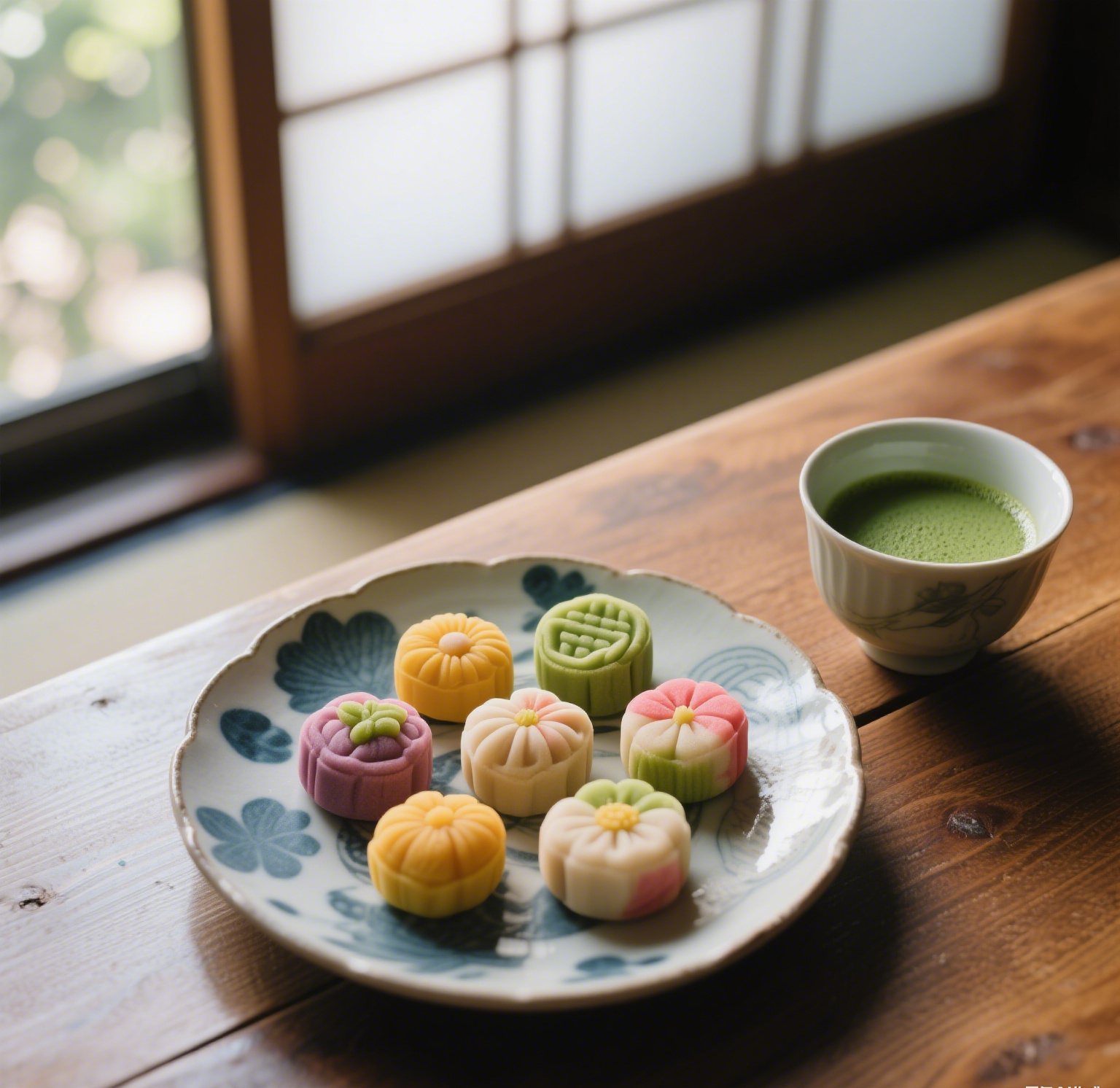Physical Address
304 North Cardinal St.
Dorchester Center, MA 02124
Physical Address
304 North Cardinal St.
Dorchester Center, MA 02124
Step into the enchanting world of wagashi (和菓子) – traditional Japanese sweets that delight both the eyes and the palate. Crafted from seasonal ingredients like rice flour, sweet red bean paste (anko), agar-agar, and kinako (roasted soybean flour), these edible masterpieces reflect Japan’s deep connection to nature and the changing seasons.

Wagashi are classified by moisture content, creating three distinct textures:
Nama-gashi (生菓子): Lusciously soft and moist (>30% water).
Iconic examples: Chewy daifuku (filled mochi), honeycomb-patterned dorayaki pancakes, jelly-like mizu manjū, sakura-scented sakura mochi, smooth yōkan (jellied red bean dessert), fish-shaped taiyaki cakes, oak-wrapped kashiwa mochi, colorful dango skewers, maple-leaf momiji manjū, sculpted nerikiri, sweet rice ohagi, and velvety warabi mochi.
Hannama-gashi (半生菓子): Semi-dense with balanced texture (10-30% water).
Must-tries: Crispy-shelled monaka wafers sandwiched with sweet fillings, nutty ishi-goromo (“stone robes”), crumbly su-hama, and layered kusamochi (herb-infused rice cakes).
Higashi (干菓子): Delicate dry confections (<10% water).
Classic treats: Savory senbei rice crackers, jewel-like konpeitō sugar stars, floral-shaped rakugan pressed sugars, dewy murasame “village rain” cakes, puffed kaminari-okoshi thunder crackers, and crispy arare rice bites.
Entering a wagashi shop feels like discovering a treasure chest of flavors and artistry—from matcha-infused creations to sakura-petal adorned sweets. Each piece celebrates Japanese aesthetics through seasonal designs, making wagashi not just desserts, but edible poetry.